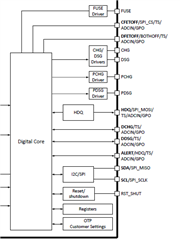Other Parts Discussed in Thread: BQ76952, BQSTUDIO
Dears,
As per the given data sheet we followed the programming steps in TI Eval board (BQ76952EVM) for SPI communication establishment (default I2C).
But still we do not established SPI communication interface in BQ76952 (Default I2C).
Attached doc shows steps followed for SPI communication establishment.
Thanks and regardsDefault I2C to SPI communication establishment.pdf
Subhash Dhyani




